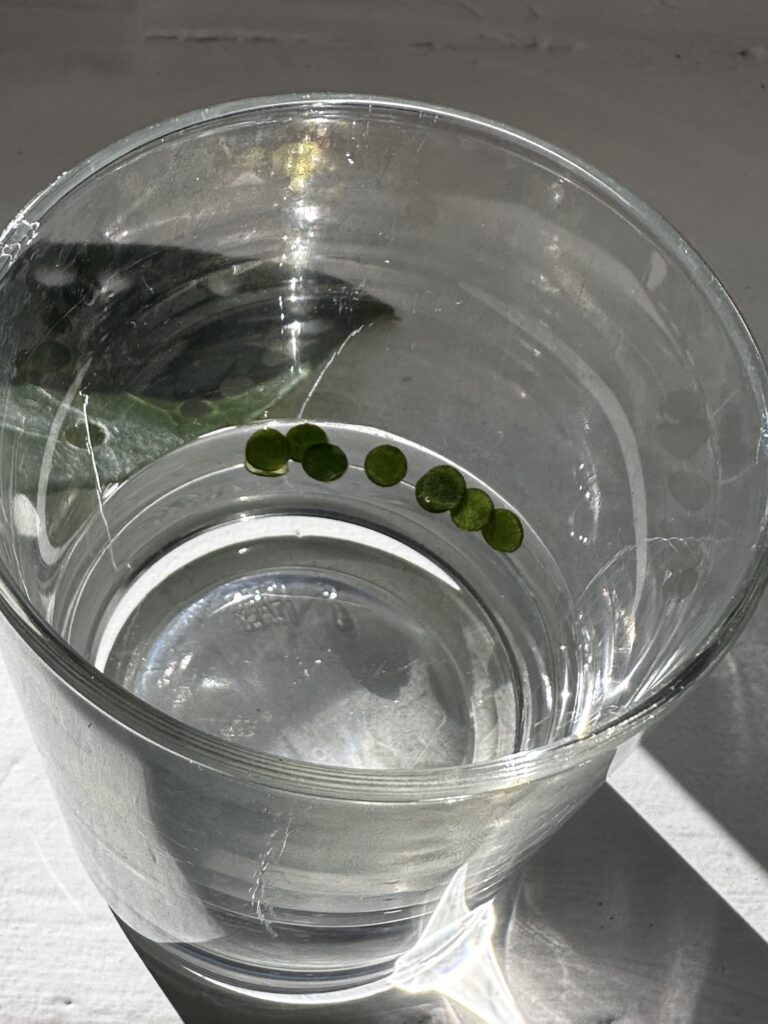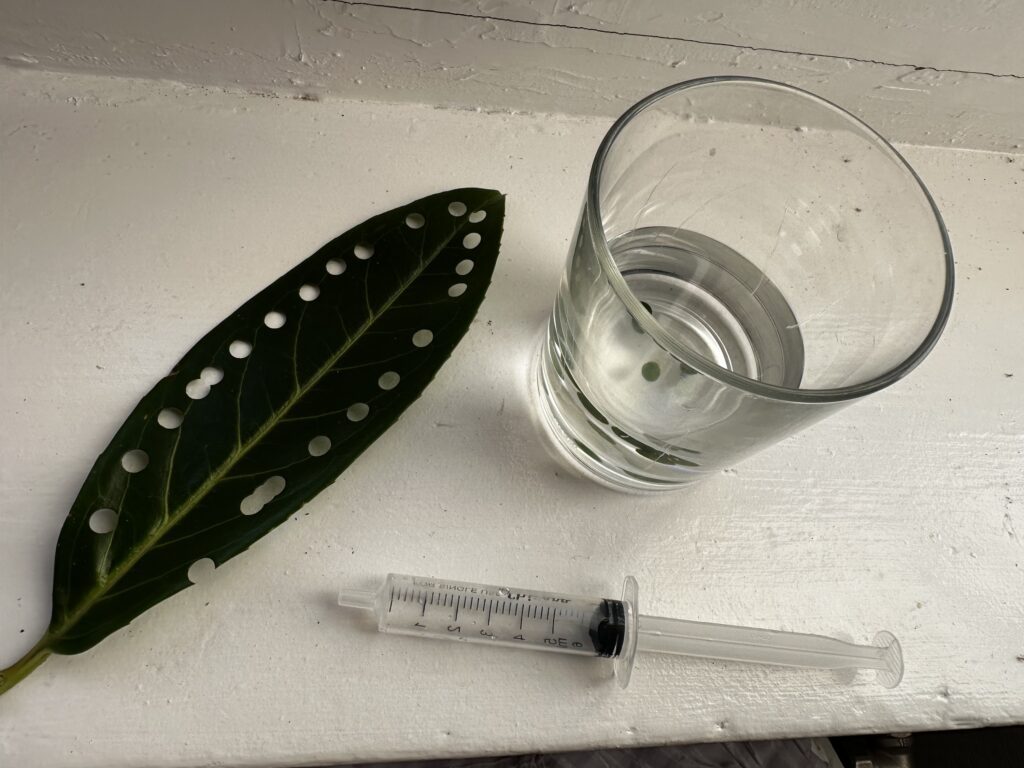Lab activity : Gas exchange and photosynthesis
Photosynthesis converts carbon dioxyde into glucose using light energy. The glucose is then converted into sucrose, which is used to build new, more complex molecules. When light is absorbed by the pigments in a leaf, the energy absorbed by the thylakoids in the chloroplast is converted into chemical energy and the carbon dioxide is absorbed to form part of the Calvin-Benson cycle in the stroma.
The balance equation for photosynthesis is as follows:
Light energy
6CO2 + 6H2O ———> C6H12O6 + 6O2
Chloroplast
In the leaf, this results in the absorption of CO2 and the release of O2 into the air space in contact with the stomata.
Problem: How can we measure the intensity of photosynthesis in a conventional leaf?
We are going tu use the method of the extraordinary floating leaf disc.
A- Background on the leaf disc method to measure rate of photosynthsis
With the text below, analyse and explain in 2 or 3 sentences the process that will be used in this experiment.
This method employs the principal of changes in buoyancy of leaf tissue when the leaf is producing O2 by photosynthesis. Students punch out small discs from leaves and use a syringe containing sodium bicarbonate solution to force out the gasses trapped in the spongy mesophyll layers of the leaf making them sink in solution and, at the same time, infiltrating the tissue with bicarbonate solution to provide a source of carbon for photosynthesis. When exposed to light, photosynthesis occurs, and oxygen is produced and trapped in the intercellular spaces within the leaf tissue making them buoyant and float. The rate of disc floatation is an indirect measure of the rate of photosynthesis, providing a simple quantitative assay for the school laboratory.
The procedure does not require any expensive equipment; however, a strong light source may be required.
The method can be used to perform a variety of controlled experiments to measure the effect of one factor on the rate of photosynthesis. Factors include light intensity, light colour (wavelength), carbon dioxyde concentration, pH, and chemical inhibitors, such as those found in weed killer.
Today, we only are going to test the effect of light or no on the leaf disc.

B- Experiment
Materials:
- Sodium Bicarbonate (sparkling water)
- Liquid Soap
- Syringe
- Leaf
- Hole Punch
- Timer
- Light Source
Procedure:
- Obtain two syringes
- Obtain 300 mL of bicarbonate solution (NaHCO3)
- Hole punch 20 uniform leaf disks in texture and thickness avoiding major leaf veins (10 for each trial)
- Remove the plunger of the syringe and place 10 leaf disks in the syringe barrel
- Replace the plunger being careful not to crush the leaf disks. Push on the plunger until only a small volume of air and leaf disk remain in the barrel
- Draw a small volume of the sodium bicarbonate solution into the syringe. Invert the syringe and tap the syringe to suspend the leaf disks in the solution.
- Push the plunger removing as much air a possible from the syringe.
- Hold a finger over the syringe opening and draw back on the plunger to create a vacuum. Hold this for 10 seconds while swirling the syringe to further suspend the leaf disks in solution.
- Let off the vacuum and repeat step 8 if needed 2-3 more times until all leaf disks sink.
- Place the syringe underneath the light source and begin timing
- Record the number of floating disks at the end of each time period in the data table
- Keep time for 20 minutes. Gently swirl syringe to dislodge any disks that are stuck to each other or on the side of the syringe
- Repeat steps 3 – 13 for the dark lighting condition. Do this while you are waiting for your time.
C- Results and discussion
Results and data collection:
| Number of Disks Floating | |||||||||
| Treatment | 2 min | 4 min | 6 min | 8 min | 12 min | 14 min | 16 min | 18 min | 20 min |
| With direct light | |||||||||
| without a direct light | |||||||||
Discussion :
Questions:
- Graph your results for both trials on only one graph. Label the graph, both axes and provide a legend to distinguish each trial.
- What was the rate of photosynthesis for each light source? How many leaves floated/minute?
- Which trial resulted in all the leaf disks floating the fastest? Explain why you think this happened.
- Where does photosynthesis occur in a plant?
- How does light intensity affect the rate of photosynthesis?
- Design an experiment to investigate a different variable in the rate of photosynthesis (What other factors may affect the rate of photosynthesis?).
Investigation
- Question you will investigate
- Hypothesis of expected results
- Logical steps to do the plan (You do not have to write out procedures but write 1-2 sentences on what the experiment would look like)
- One manipulated variable
- One responding variable
- Two controlled variables
- How often measurements should be taken and recorded

Vocabulary :
To have more details: Exploratorium.edu

